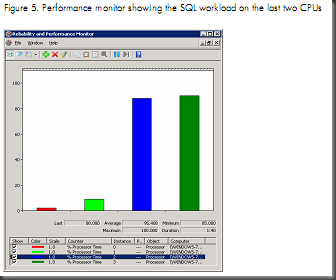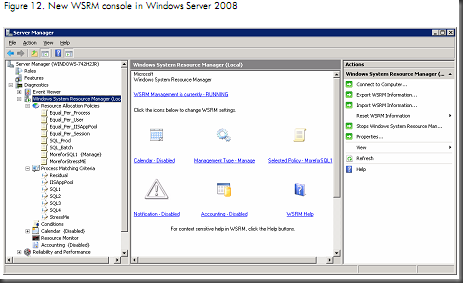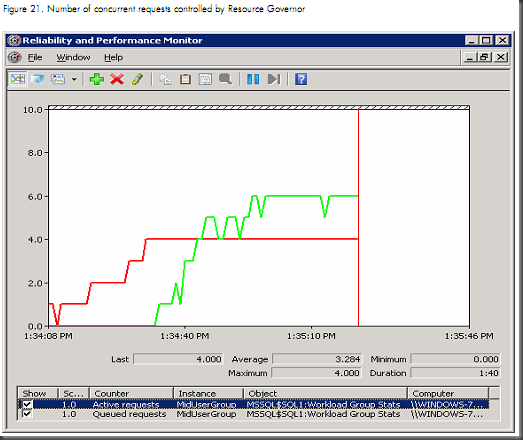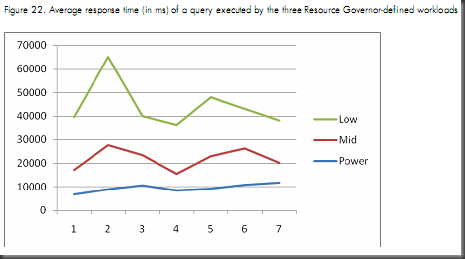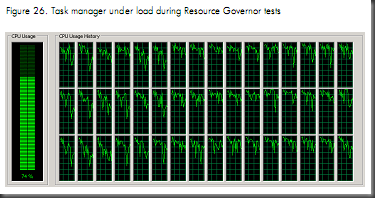Optimizing HP Servers with Microsoft SQL Server 2008...
A very interesant whitepaper is now available on HP site.
Here are the covered subjects :
SQL Server instances............................................................................................................................ 2
Processor affinity ................................................................................................................................. 4
Degree of parallelism........................................................................................................................... 8
Memory management .......................................................................................................................... 8
Hot addition of memory...................................................................................................................... 11
Hot addition of CPUs ......................................................................................................................... 11
Windows System Resource Manager ................................................................................................... 12
Resource Governor ............................................................................................................................ 15
Defining the workload .................................................................................................................... 16
Creating the classifier user-defined function....................................................................................... 16
Registering the classifier function in Resource Governor ...................................................................... 17
Testing a resource pool with Resource Governor ................................................................................ 17
NUMA architecture............................................................................................................................ 22
Windows and NUMA .................................................................................................................... 24
SQL Server 2008 and NUMA ......................................................................................................... 24
NUMA software ................................................................................................................................29
Storage and NUMA architecture ......................................................................................................... 31
Partitioning and virtualization.............................................................................................................. 33
Hard partitioning ........................................................................................................................... 33
Pay per use ................................................................................................................................... 33
Virtualization................................................................................................................................. 34
Conclusion........................................................................................................................................ 36
For more information.......................................................................................................................... 37
Overview
When implementing a hardware consolidation project, one major step involves consolidating
corporate data, which is mostly managed by multiple database engines. This activity requires high-
performance servers with multiple CPUs and addressable memory capacity. Experience shows that the
average size of databases grows exponentially, with the result that business processing applications
like data warehouse and business intelligence become more demanding and complex.
Some studies on consolidation of corporate data demonstrate that stand-alone SQL Server
implementations are, on average, underused. It is easy to understand why we have this situation in
many data centers. A few years ago, SQL Server was running only on 32-bit platforms. The
resources available on these servers were not sufficient to host multiple instances, especially in regard
to the memory requirements. Because we had to be sure that the resources were available during the
peak period, servers were being underused most of time.
With the introduction of SQL Server 2000, then with SQL Server 2005, and now with SQL Server
2008, Microsoft is providing its database engine in a 64-bit version. Processors, such as the Xeon
and the Itanium from Intel, or the Opteron from AMD, provide 64-bit capabilities that can be used by
Windows Server and SQL Server.
Combined with Windows Server 2008, SQL Server can now be deployed on enterprise-class servers.
Today Windows Server can scale up to 64 threads and 2 TB of physical memory. These numbers
might even increase in the upcoming years.
With 64-bit configurations, consolidating the corporate data on one single device is now a valid
option. The financial benefits are significant: a lower total cost of ownership and a higher return on
investment. From the technical standpoint, having multiple databases exposed through multiple
database engines presents new challenges: first, the data isolation must be guaranteed between the
applications. Grouping all the data onto one server also requires a very high level of availability.
Another challenge is to guarantee suitable response times for all the applications that will be
accessing their data from the same server. Resource management technologies are essential features
to ensure that the service level agreement (SLA) is fulfilled and the resources are well optimized and
dispatched according to the need.
The objective of this whitepaper is to show how Microsoft SQL Server 2008, specifically on 64-bit
platforms, together with the resources and technologies available on HP servers offer unique solutions
for consolidating corporate data.
The following is here : https://h71028.www7.hp.com/ERC/downloads/4AA1-7712ENW.pdf
With some interesting screenshots :
Comments
- Anonymous
January 01, 2003
Après le très bon Optimizing HP Servers with Microsoft SQL Server 2008 voici un nouveau livre


